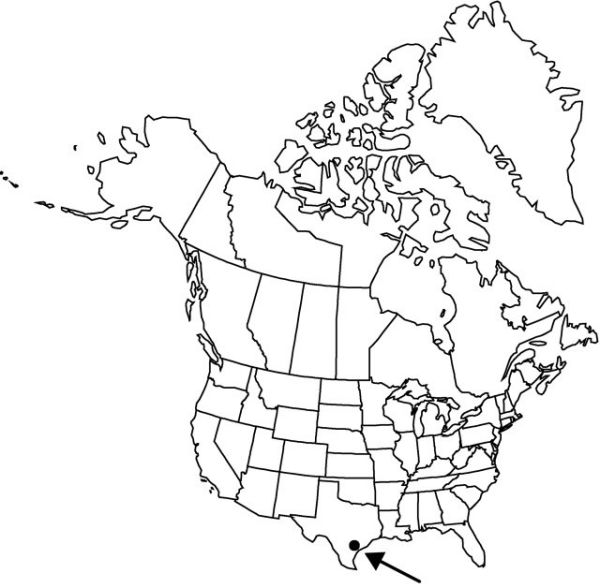Zephyranthes refugiensis
Rhodora 63: 214. 1961.
Leaf-blade dull green, to 4 mm wide. Spathe 1.9–3.2 cm. Flowers erect; perianth dark lemon yellow, funnelform, 2.5–5 cm; perianth-tube green, (1–) 1.2–2 (–2.4) cm, increasing in diam., less than 1/2 perianth length, ca. 2 times filament length, ca. 1/2–3/4 spathe length; tepals sometimes reflexed; stamens diverging to semifasciculate, appearing equal; filaments filiform, (0.5–) 0.6–0.8 (–1.1) cm; anthers ca. 7 mm; style longer than perianth-tube; stigma capitate, usually among anthers; pedicel (0.1–) 0.2–1.6 (–1.8) cm, shorter than spathe. 2n = 46, 48.
Phenology: Flowering late summer–early fall (Aug–Oct).
Habitat: Primarily low, sandy loam, open fields, swales, ditches
Elevation: 10–30 m
Discussion
Of conservation concern.
Morphology, cytology, and distribution suggest that Zephyranthes refugiensis arose as a hybrid between Z. pulchella and Z. jonesii. It is known only from Goliad and Refugio counties.
Selected References
None.
Lower Taxa
"wide" is not a number."thicker" is not a number.
